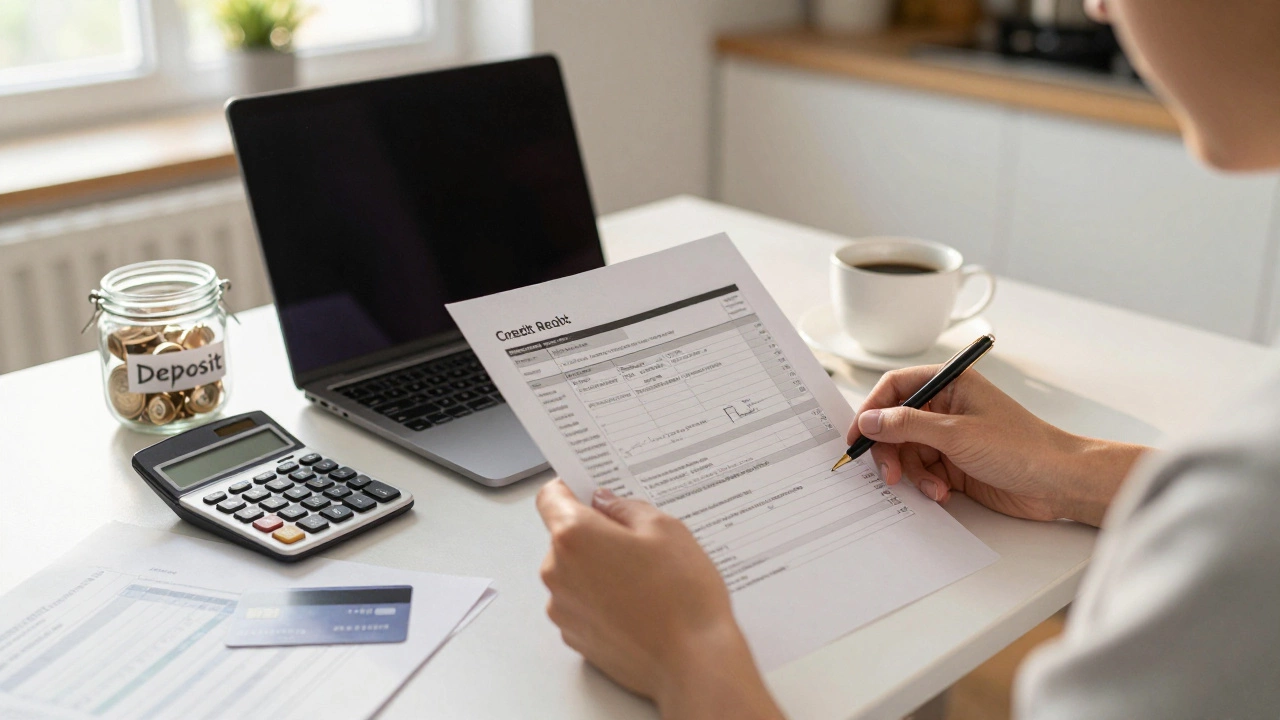The first time a refund check lands in your mailbox or bank account, it feels almost unreal. One day you’re watching your student loan balance climb and suddenly, the school sends money back to you? It’s not a glitch. It’s actually built into how student loans work—though no one seems to bother explaining that in orientation. Right now, some students in 2024 are double-checking their accounts, scrolling through school emails, and thinking, “Why did I get a student loan refund check out of nowhere?” You’re not alone. Most people don’t expect to get money back from a debt they have to repay. The reasons behind it aren’t always obvious, but there’s a very real process behind these refunds that speaks to the heart of the financial aid system. It’s a little complicated, but if you stick with it, you’ll understand why your refund landed in your lap, what you should do with it (besides blowing it on delivery sushi), and what crazy pitfalls I’ve seen classmates fall into.
What Is a Student Loan Refund and How Does It Happen?
Let’s break down the basics. When you take out federal or private student loans, the money isn’t sent straight to you. Instead, your lender sends it to your university, which uses it to pay your tuition, mandatory fees, and on-campus living expenses, if you have any. If you get other financial aid—like grants or scholarships—the school subtracts that too. Now, here’s where things get interesting: if your loans and financial aid together cover more than your direct school charges, you’ve got money left over.
This is where refund checks come in. By federal law, your school must release (or "refund") the extra money to you within 14 days of disbursing your loan if you have any leftover after tuition, fees, and required campus housing have been paid. For a lot of us, this means a direct deposit or a paper check appears once or twice a year. In 2024, this still holds true. The Higher Education Act and the latest rules from the U.S. Department of Education haven’t changed that core process, despite endless talk of loan reform.
You might be thinking: "Whoa, did I borrow too much? Or did my school mess up?" Honestly, the answer is usually more practical. Loan amounts get calculated based on the cost of attendance—not just the sticker price of your classes, but also books, supplies, housing, transportation, and even a modest amount for living expenses. If you (or your parents) accept the maximum your school offers—not just what covers your tuition—you could be set up to get a refund every semester. That’s not always a bad thing, but a refund check is not free money, even though it might feel that way.
According to the most recent stats from the National Center for Education Statistics, about 65% of undergraduates in the U.S. get some kind of financial aid, and roughly half of all undergraduates who take out loans will see at least one refund check in their college years. It’s so common that some colleges openly warn about spending your refund too fast.
Why Did I Specifically Get a Refund Check in 2024?
The big questions this year hinge on a mix of personal, financial, and policy changes. First, ask yourself what changed between previous years and now. Did you change programs or transfer? Did you move off-campus? Did your school add or remove fees, or did you get a new scholarship?
In 2024, some specific trends are reshaping why student loan refunds seem more frequent. Thanks to record inflation in 2023 and early 2024, more schools upped living expense estimates—sometimes by hundreds or even thousands of dollars. Regulatory changes forced some universities to bundle more of your "indirect" costs into their cost of attendance, like off-campus rent or travel, to keep up with the real world. If you borrowed up to the max, your refund might suddenly be bigger than last year, even if you’re studying the same way.
Table: Common Reasons for Getting a Student Loan Refund (2024)
| Reason | Description |
|---|---|
| Over-Borrowing | Accepted more loan funds than were needed for direct costs. |
| Extra Financial Aid | Received unexpected scholarships or grants after loans were disbursed. |
| Living Off-Campus | Your cost of attendance increased, so refund is larger if school based loan calculation on campus cost. |
| Reduced Costs | Dropped classes, switched to part-time, or found cheaper housing after loans were set up. |
| Policy Updates | Your school changed how it calculates the cost of attendance due to new federal guidance. |
Here’s another twist: in 2024, some students at larger public universities received refund checks after universities updated their systems to pay out e-refunds faster due to pressure from state legislatures. Delays used to annoy students (and probably fuel some bad Yelp reviews). Now, you might not realize how your refund check landed in your account so quickly.
Sometimes the refund is the result of a simple but weird timing issue: If you dropped credits after the loan was already paid to your school, suddenly there’s money with nowhere to go but back to you. Or maybe you hit the academic jackpot—your FAFSA calculation changed, or a new scholarship came through after loans were processed. Either way, check your breakdown in your school’s portal. Every refund check should come with an itemized statement of what’s covered.

What Can (and Should) You Do With Your Student Loan Refund?
When I got my own refund check in grad school, my first reaction was relief. Then, the guilt hit. My wife Elaine had always told me: just because you have money doesn’t mean you should spend it. She’s right. That refund isn’t bonus cash. You’re still on the hook for paying back every cent, plus interest. Here are smart, practical ways people in 2024 are using their student loan refunds—and some common traps to avoid.
- Use It For Education Costs: Obvious, but important. Books, special software, lab fees, off-campus rent (if housing is part of your cost of attendance), or a required laptop. Keep receipts.
- Return What You Don’t Need: You can usually give back any unused funds to your loan servicer, and avoid extra interest. Most schools have an online option now—don’t wait for the check to clear if you’re planning to return it anyway.
- Save for Emergencies: Not everyone has a family safety net. Putting refund money in a high-yield savings account for car trouble, medical bills, or rent crises can keep you out of credit card debt.
- Don’t Blow It: Temptation is real. One friend bought a PS5 and a semester's worth of take-out on her refund. Her monthly loan payments are brutal now. Treat the refund as borrowed money—because it is.
- Pay Down High-Interest Debt: If you have credit card debt that’s eating your budget, paying a chunk off with your refund (if your loans are subsidized or have a lower rate) isn’t the craziest idea.
- Plan for Tax Time: Scholarships can sometimes be taxable, but student loan refunds are not. Still, keep a record, just in case campus accounting asks you about it later.
Tips to Avoid Student Loan Refund Pitfalls
Let’s get brutally real: student loan refund checks have led to lots of financial faceplants. The most common I've seen? People treat them like financial aid lottery winnings, only to regret it years later. Here are ways to stay out of refund-check trouble in 2024:
- Review Your Award Letters: Don’t blindly accept the max offered every year. Calculate what you actually need. Costs can go up or down.
- Project Your Budget Each Semester: Plan out real-world costs before loans get disbursed. If you’re new off-campus, do the math—utilities and groceries sneak up on people.
- Check School Audit Trails: Your portal usually logs every refund as a credit on your account before a check is cut. Double-check for errors.
- Understand Satisfactory Academic Progress (SAP): If you drop too many credits and slip below your school’s SAP standards after getting a refund, you might have to give money back and lose aid for future terms.
- Stay in Touch with Financial Aid Advisors: If you have any doubt—ask before spending. Advisors hear these panicked refund questions daily.
- Monitor Student Loan Servicer Communications: Sometimes, policy tweaks roll out mid-year. Stay in the loop on grace periods or repayment changes.
- Separate School from Personal Accounts: Some banks let you open a second checking account for "school money." It’s a simple trick to avoid mixing refund cash with your regular spending money.
- Prepare for Repayment—Yes, Already: If new rules come in or repayment pauses lift (as happened to millions when the federal freeze ended in fall 2023), you’ll want as little extra debt as possible.
Here’s something weird: a 2023 study published in the Journal of Student Financial Aid found that a quarter of undergrads “regularly” overborrow by $500 or more each semester just to access living expense money they don’t need. Next year, they repay nearly $1,500 extra just based on that. Tiny mistakes snowball.
Careful planning now saves a lot of pain later—trust me, Elaine and I learned the long way during our endless nights spent hunched over the kitchen table working through our own postgrad loan paperwork. If you got a student loan refund in 2024, take a breath, think ahead, and treat that money like the debt it is, not a windfall.






